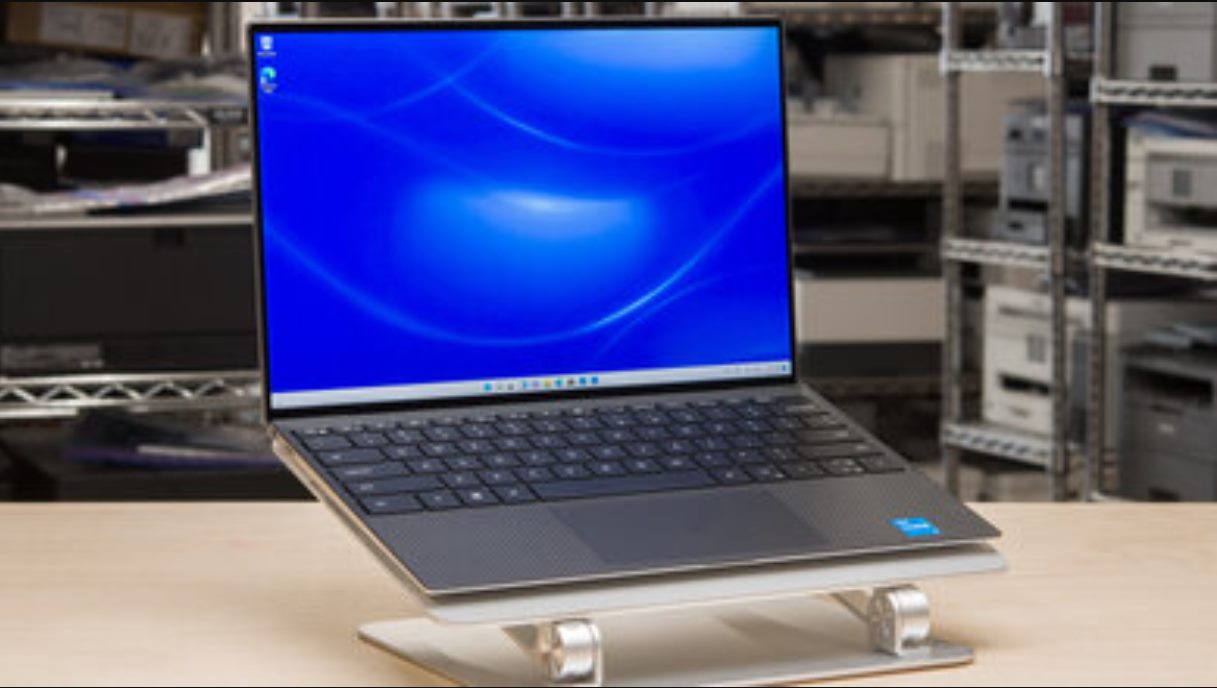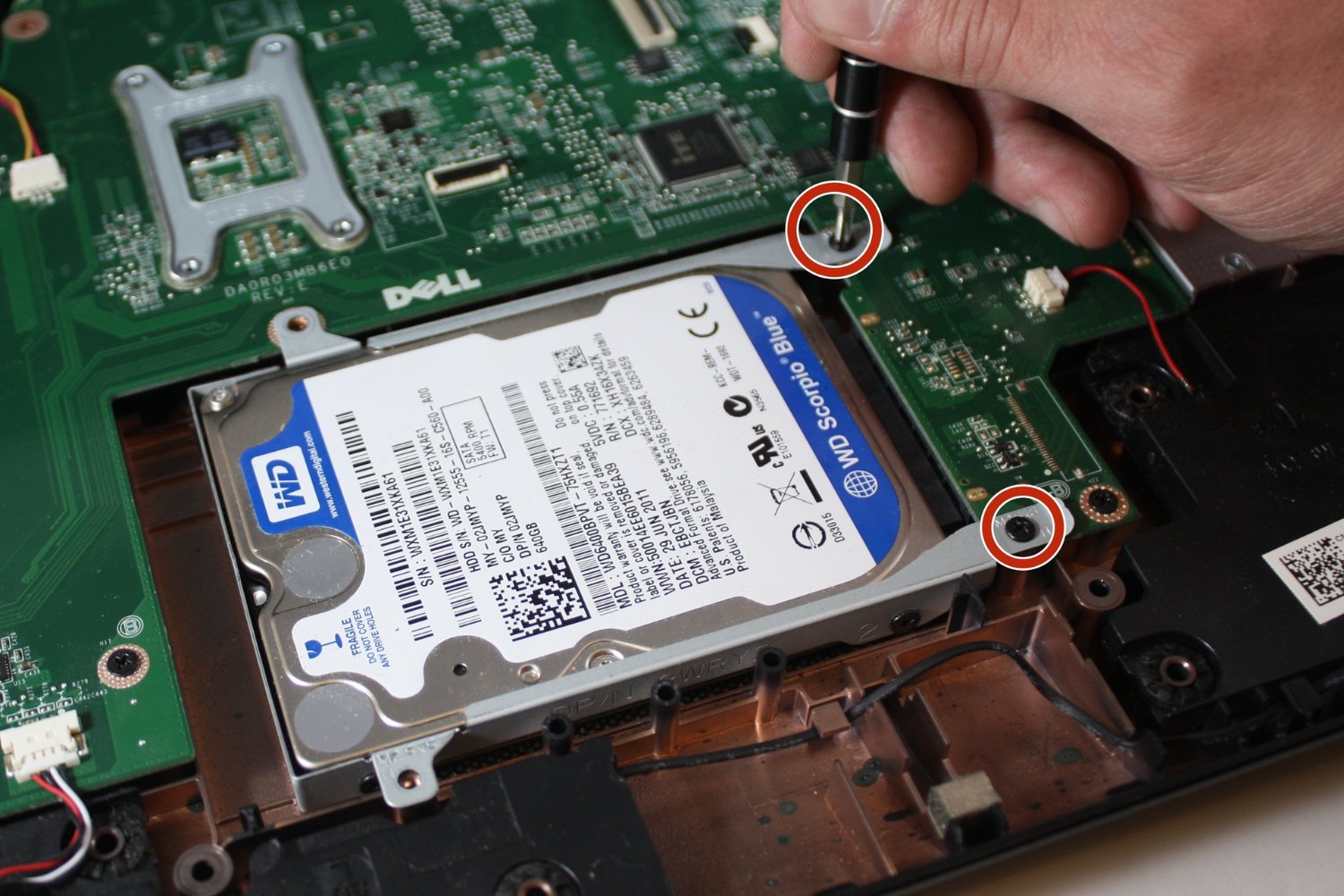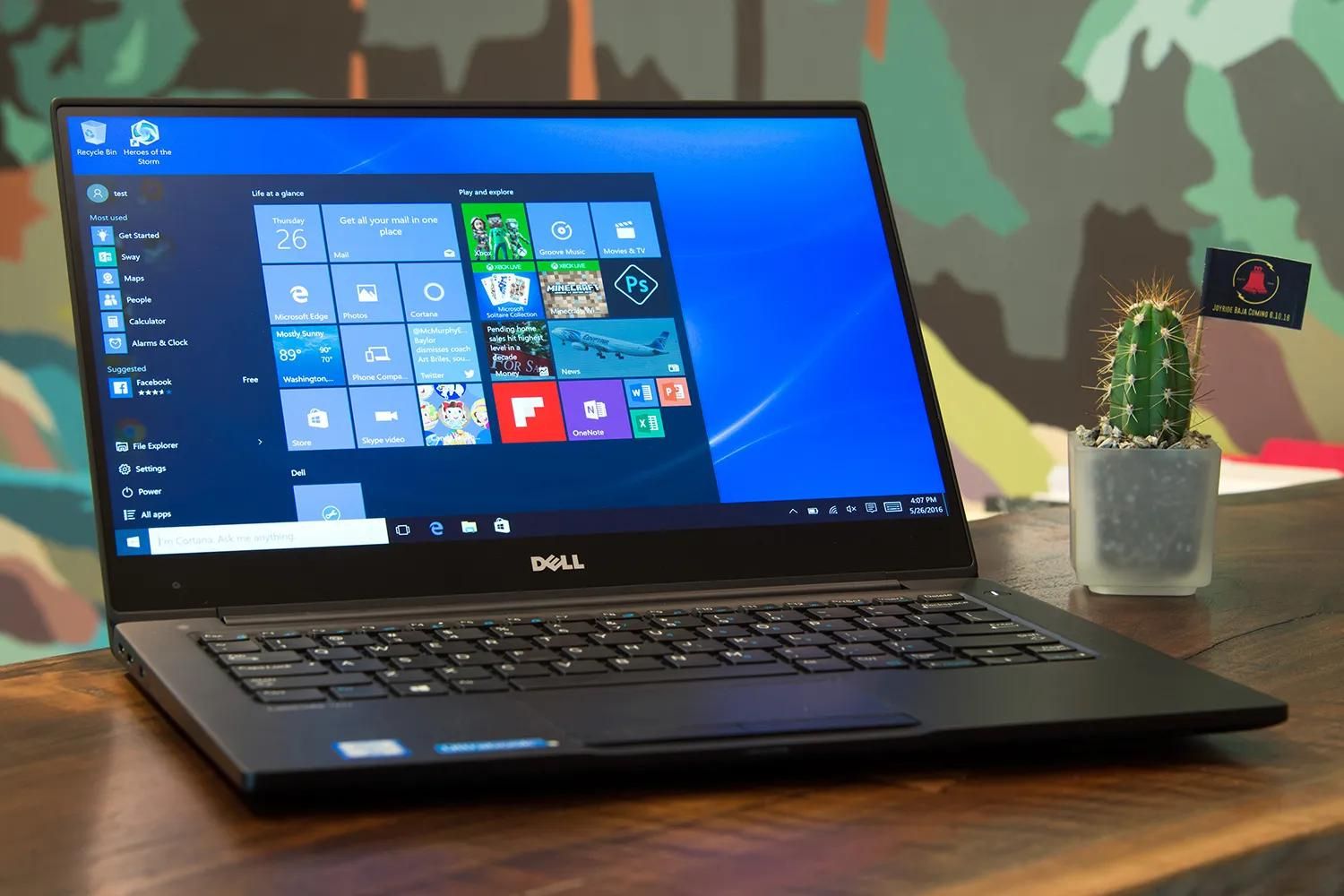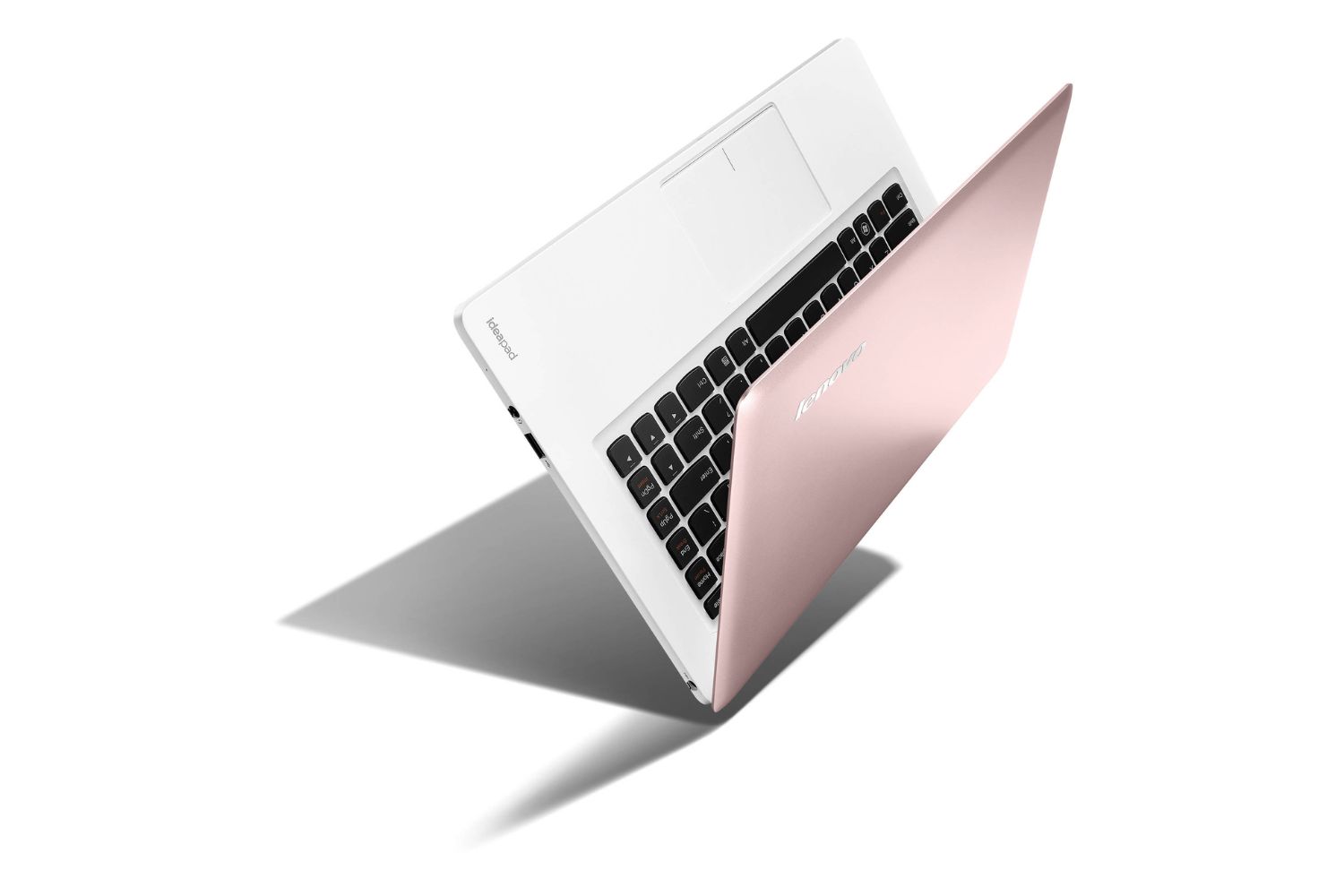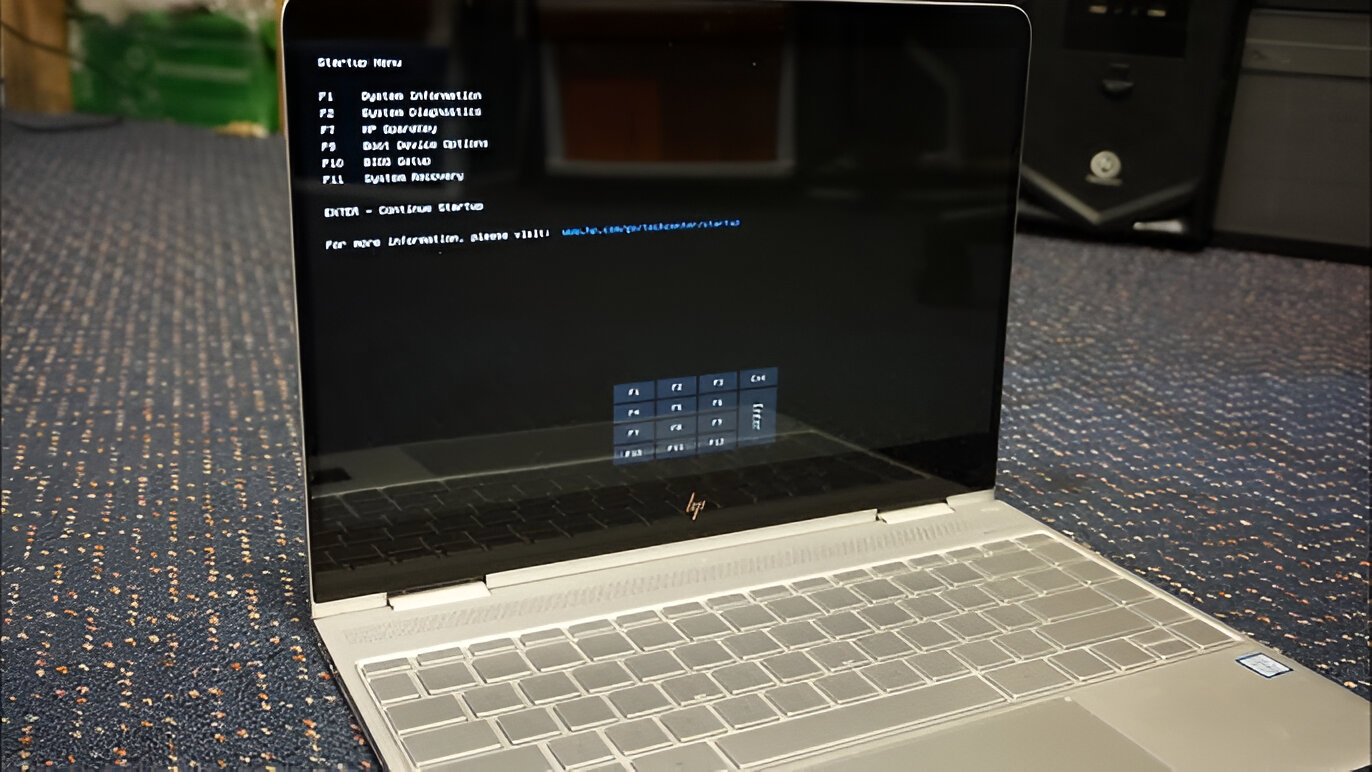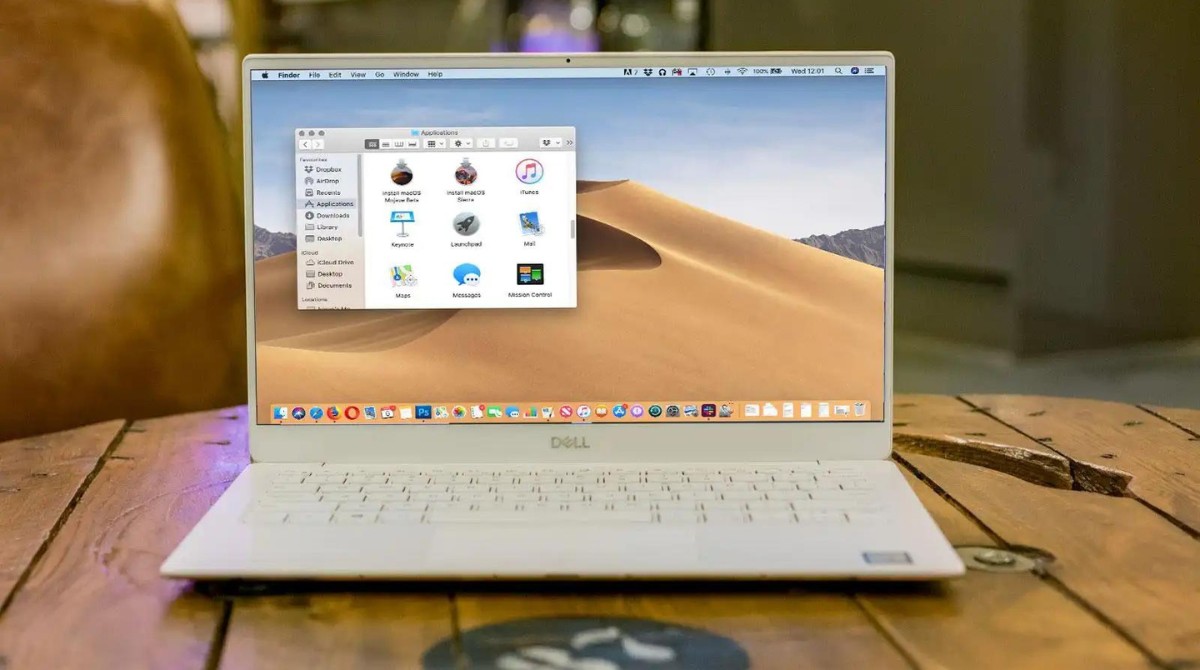Introduction
When it comes to troubleshooting issues with your Dell Ultrabook 7370, one of the most common problems users face is getting their bootable USB to work properly. Whether you need to reinstall the operating system or run a diagnostic tool, having a bootable USB is essential. However, sometimes things don’t go as planned, and you may encounter errors or difficulties along the way.
In this article, we will guide you through the process of getting your bootable USB to work on your Dell Ultrabook 7370. We will explore various methods to ensure that you can successfully boot from your USB drive and address common issues that may arise. By following these steps, you will be able to overcome any obstacles and get your Dell Ultrabook 7370 up and running smoothly.
Before we dive into the troubleshooting steps, let’s have a brief understanding of what a bootable USB is and why it is important. A bootable USB is a USB drive that contains the necessary system files to start up a computer. It allows you to install or repair the operating system on your Dell Ultrabook 7370 when the internal storage is inaccessible or damaged.
Having a bootable USB is especially useful when you encounter issues like a corrupted operating system or a failing hard drive. It provides a way to boot into a separate environment and perform necessary actions to resolve the problem. It is an essential tool in every computer user’s arsenal.
In the following sections, we will discuss the steps you need to take to ensure that your Dell Ultrabook 7370 recognizes and boots from the USB drive. We will also explore common issues you may face and provide solutions to troubleshoot them. By the end of this article, you will have a clear understanding of how to get your bootable USB to work on the Dell Ultrabook 7370.
Understanding Bootable USB
Before we delve into troubleshooting, it is important to have a clear understanding of what a bootable USB is and how it functions. A bootable USB is a USB drive that contains the necessary files and tools to start up a computer. By inserting the bootable USB into your Dell Ultrabook 7370, you can bypass the internal storage and boot directly from the USB drive.
A bootable USB is created by using specific software that copies the operating system or diagnostic tools onto the USB drive. This allows you to perform tasks such as installing a new operating system, running a system recovery, or running diagnostics on your Dell Ultrabook 7370.
Having a bootable USB is crucial, especially when you encounter problems with your operating system or internal storage. It provides a convenient and efficient way to troubleshoot and resolve these issues without the need for a functioning hard drive.
Creating a bootable USB involves several steps. First, you need to obtain the necessary software or operating system image that you want to install or use. Next, using a dedicated software tool, you copy the files onto the USB drive and ensure that it is properly formatted and set up as a bootable device. Once completed, you can insert the bootable USB into your Dell Ultrabook 7370 and configure the BIOS settings to boot from the USB drive.
Before we proceed with the troubleshooting steps, it is important to note that not all USB drives are bootable. To utilize a USB drive as a bootable device, it must meet certain requirements. The USB drive should have sufficient storage capacity to accommodate the operating system or tools, and it needs to be formatted correctly. Additionally, the BIOS settings of your Dell Ultrabook 7370 must be configured to recognize and prioritize booting from the USB drive.
In the next sections, we will explore the necessary steps to ensure that your Dell Ultrabook 7370 recognizes the bootable USB and successfully boots from it. We will also address common issues users may face when attempting to use a bootable USB and provide troubleshooting solutions.
Checking BIOS Settings
Before you can successfully boot from a USB drive on your Dell Ultrabook 7370, it is crucial to ensure that your BIOS settings are correctly configured. The BIOS (Basic Input/Output System) is a firmware that initializes and controls your computer’s hardware upon startup. By accessing the BIOS settings, you can modify various system configurations, including the boot order.
To access the BIOS settings on your Dell Ultrabook 7370, restart the computer and continuously press the designated key during startup (usually F2 or Delete). Keep in mind that the key to access the BIOS settings may vary depending on your computer’s manufacturer, so consult the user manual or Dell’s support website for specific instructions.
Once you have entered the BIOS settings, navigate to the “Boot” or “Boot Order” section. In this section, you will see a list of boot devices, typically displayed as “Boot Priority,” “Boot Sequence,” or something similar. The boot devices are listed in a specific order, indicating the order in which the system will attempt to boot from them.
Ensure that the USB drive is listed as one of the boot devices and is given a higher priority than the internal storage (such as the hard drive or SSD). Use the arrow keys to move the USB drive to the top of the boot order. If necessary, refer to the instructions provided within the BIOS settings to change the boot order.
Additionally, some BIOS settings may offer a specific setting called “Boot Mode” or “Boot Mode Selection,” which determines the type of operating system or boot device the system will support. Depending on your situation, ensure that the appropriate boot mode is selected, such as “Legacy” for older operating systems or “UEFI” for newer ones.
Once you have made the necessary changes to the BIOS settings, save and exit. Your Dell Ultrabook 7370 will now attempt to boot from the USB drive instead of the internal storage. If the bootable USB is properly configured, you should see the system loading from the USB drive. If not, there may be other issues at play, which we will address in the following sections.
Checking and configuring the BIOS settings is an essential step in troubleshooting bootable USB issues on your Dell Ultrabook 7370. By ensuring that the USB drive is recognized and given priority in the boot order, you increase the chances of a successful boot from the USB drive and resolving any underlying issues you may be facing.
Creating a Bootable USB
Creating a bootable USB is a straightforward process that requires specific software and an image of the operating system or tools you want to install or use. Here’s a step-by-step guide on how to create a bootable USB for your Dell Ultrabook 7370:
- Obtain the necessary software or operating system image. This could be a Windows installation ISO or a diagnostic tool specifically designed for your Dell Ultrabook 7370. Make sure you download the correct version and edition that matches your requirements.
- Plug in a USB drive with sufficient storage capacity. It’s recommended to use a USB drive with at least 8GB of storage to ensure it can handle the operating system or tools.
- Download and install a dedicated tool for creating bootable USB drives, such as Rufus or Windows USB/DVD Download Tool. These tools make the process easier and ensure the USB drive is properly formatted and set up for booting.
- Open the bootable USB creation tool and select the downloaded software or operating system image as the source. Make sure to double-check that the USB drive is selected as the target device, as the process will erase all existing data on the USB drive.
- Configure any additional settings, such as the file system (usually FAT32) and the boot mode (legacy or UEFI) if applicable. These settings may vary depending on the tool you are using.
- Click on the “Start” or equivalent button to begin the creation process. The tool will format the USB drive, copy the necessary files from the source image, and make it bootable.
- Once the process is complete, safely remove the USB drive from your computer.
Now that you have a bootable USB, you can insert it into your Dell Ultrabook 7370 and configure the BIOS settings to boot from the USB drive, as discussed in the previous section. If everything is set up correctly, your Dell Ultrabook 7370 should recognize the bootable USB and boot into the operating system or tools stored on it.
Creating a bootable USB is a crucial step in troubleshooting bootable USB issues on your Dell Ultrabook 7370. By properly preparing the USB drive and copying the necessary files, you ensure a smooth and successful boot from the USB drive, allowing you to perform essential tasks such as installing or repairing the operating system.
Troubleshooting Common Issues
While creating and configuring a bootable USB drive for your Dell Ultrabook 7370 is generally a straightforward process, you may encounter some common issues along the way. Let’s take a look at these issues and explore possible solutions to troubleshoot them:
- USB Drive not recognized: If your Dell Ultrabook 7370 does not recognize the USB drive, ensure that the USB drive is properly inserted and that the connections are secure. Try using a different USB port or a different USB drive to eliminate any potential hardware issues. You should also check if the USB drive is functioning correctly by testing it on another computer.
- Incorrect Boot Order: If the USB drive is not being booted from, double-check the BIOS settings to ensure that the boot order is correctly configured. Make sure the USB drive is listed and given a higher priority than the internal storage devices. It’s also a good idea to disable any unnecessary boot options to avoid confusion.
- Corrupted Bootable USB: Sometimes, the bootable USB drive may become corrupted during the creation process or due to other factors. To overcome this issue, recreate the bootable USB using the original software or operating system image. Ensure that the image file is not damaged or incomplete. You can also try using a different USB drive to rule out a hardware issue.
- Compatibility Issues: Ensure that the software or operating system image you are using is compatible with your Dell Ultrabook 7370. Check the system requirements and specifications to verify compatibility. If necessary, obtain the correct version or edition of the software or image that matches your device.
- BIOS Settings not saved: If you have correctly configured the BIOS settings to boot from the USB drive, but the changes are not being saved, ensure that you are properly exiting the BIOS settings. Save and exit the settings using the specified key or option. If the issue persists, you may need to update your BIOS firmware.
If you encounter any of these common issues while working with your bootable USB, following these troubleshooting steps should help you overcome them. In some cases, you may need to consult Dell support or seek assistance from a technical expert to resolve more complex or hardware-related issues.
Remember to always double-check your hardware connections, USB drive, and BIOS settings before assuming there is a deeper issue. By systematically troubleshooting these common problems, you can ensure a successful boot from your USB drive and proceed with your desired tasks on your Dell Ultrabook 7370.
Updating BIOS
One of the potential causes for bootable USB issues on your Dell Ultrabook 7370 could be an outdated BIOS firmware. The BIOS firmware acts as the interface between the hardware and operating system, and updating it can often resolve compatibility and performance issues.
Before updating the BIOS, it’s essential to ensure that your Dell Ultrabook 7370 is connected to a reliable power source and that you have a stable internet connection. Follow these steps to update the BIOS:
- Visit the Dell support website and navigate to the drivers and downloads section for your specific Ultrabook model.
- Select the BIOS category and locate the latest available BIOS update for your system.
- Read the release notes and download the BIOS update file onto your computer.
- Close any running programs and double-click on the BIOS update file to start the installation process.
- Follow the on-screen instructions and agree to any terms or agreements presented during the update process.
- Depending on the Dell model, you may need to restart your system to complete the BIOS update. Ensure that you save any open files and close all running applications before restarting.
- During the restart, your Dell Ultrabook 7370 will initiate the BIOS update process. Do not interrupt this process and allow it to complete.
- Once the BIOS update is finished, your Dell Ultrabook 7370 will restart again. Check the BIOS version to ensure that it has been successfully updated.
Updating the BIOS can help in resolving compatibility issues with your bootable USB and improve overall system stability and performance. However, it’s crucial to exercise caution during the update process and follow the instructions provided by Dell to avoid any potential risks or complications.
If you encounter any issues during the BIOS update or if the problem with the bootable USB persists, it is recommended to contact Dell support for further assistance. Their technical team will be able to guide you through the update process and provide additional troubleshooting steps tailored to your specific Ultrabook model.
Updating the BIOS is an advanced step and should only be attempted if you are comfortable with computer hardware and firmware updates. If you are unsure or hesitant, seeking professional help is always a viable option.
Contacting Dell Support
If you have tried all the troubleshooting steps mentioned in this article and are still experiencing issues with your bootable USB on your Dell Ultrabook 7370, it may be time to reach out to Dell support for further assistance. Dell’s support team is available to provide specialized guidance and solutions tailored to your specific device and situation.
Before contacting Dell support, it’s a good idea to gather all the relevant information about your Dell Ultrabook 7370, including your device’s model number, service tag, and a detailed description of the problem you are facing. This will help the support team better understand your situation and provide more accurate and efficient assistance.
There are multiple ways to get in touch with Dell support:
- Online Support: Visit Dell’s support website and access their online resources, including FAQs, knowledge base articles, and community forums. You may find solutions to your bootable USB issue without needing to contact support directly.
- Phone Support: Dell offers phone support in many countries. Check Dell’s support website for the appropriate contact number for your region. Be prepared to provide the necessary information about your Dell Ultrabook 7370 and the issue you are facing when speaking to a support representative.
- Live Chat: Dell provides live chat support on their website, allowing you to communicate with a support representative in real-time. This can be a convenient option if you prefer text-based communication or have a less urgent issue.
- Social Media: Dell has a presence on various social media platforms. You can reach out to them via their official Twitter or Facebook accounts. While this may not provide immediate support, it can be useful for general inquiries or to get in touch with Dell’s customer service team.
When contacting Dell support, remember to remain patient and provide all relevant details about your bootable USB issue. The support team will guide you through additional troubleshooting steps or escalate the issue if necessary.
Dell support is committed to ensuring the satisfaction of their customers and resolving any technical issues they may encounter. Reach out to them for expert guidance and assistance with your Dell Ultrabook 7370 bootable USB problem.
Conclusion
In conclusion, troubleshooting bootable USB issues on your Dell Ultrabook 7370 requires a systematic approach and careful attention to detail. By understanding bootable USB functionality, checking your BIOS settings, creating a bootable USB correctly, and troubleshooting common issues, you can ensure a smooth and successful boot from the USB drive.
If you encounter difficulties, such as the USB drive not being recognized or incorrect boot order settings, double-check your hardware connections and BIOS settings. Additionally, consider updating your BIOS firmware to resolve compatibility issues.
If all else fails, don’t hesitate to contact Dell support. Their knowledgeable team can provide specific guidance and assistance tailored to your Dell Ultrabook 7370 and the bootable USB issue you are facing.
Remember, creating and using a bootable USB is a valuable skill that allows you to install or repair operating systems, run diagnostics, and overcome various system issues. It is an essential tool in your troubleshooting arsenal.
We hope that this article has provided you with helpful insights and guidance in troubleshooting bootable USB issues on your Dell Ultrabook 7370. With the right knowledge and approach, you can get your bootable USB working seamlessly and enjoy the benefits of a properly functioning system.









